
by admin | Mar 22, 2019 | Stem Cell Research, Cannabinoid, Stem Cell Therapy
Over 1 million patients worldwide have been treated with adult stem cells and have benefited from them. And nearly 20 000 adult stem cell transplants were performed in the United States in 2014 alone! How is that possible? What are stem cells? What do they do to your body? And why are so many benefiting from them? We take a look at these important questions surrounding the benefits of stem cells, as well as how CBD can help you get the most benefits from stem cells.
What Are Stem Cells?
Stem cells are a very special kind of human cells. They are cells of the body and are therefore somatic cells, found in your bone marrow and fat cells. They are a part of your body’s natural repair process. But why are they so special? Well, they have the ability to develop into many different cell types. This can range from anything from muscle, cartilage and even bone! Stem cells can divide and become differentiated, and are therefore used as a therapy called stem cell therapy. Stem cell therapy involves using a patient’s own stem cells to repair damaged tissues. When an organism grows, the stem cells specialize and take on specific functions, including skin, nerves, blood, muscle, and liver.
Because of their magical transformative powers, they have the potential to treat a number of diseases, including diabetes, Parkinson’s and even cancer. They also have the potential to treat a number of serious injuries, from a damaged knee, to even treating spinal cord injury! Eventually, they may even be used to regenerate entire organs, decreasing the need for organ transplants. Now that we know what stem cells are and how they work, let’s have a look at five of their biggest benefits.
1. Avoid Invasive Surgery and Related Risks
One of the biggest benefits of stem cells and using them in stem cell therapy is that it allows patients who would possibly have required heavy surgery to not have any such invasive surgery. Stem cell therapy uses material already in the patient’s body, which makes it minimally invasive and also cuts out the need for an overly stressful, invasive surgical procedure. Most stem cell therapy is performed as an outpatient procedure, i.e. you can just have it done in the doctor’s office! No need for an overnight hospital stay and those ridiculously high associated medical costs.
Your doctor will first conduct a bone marrow aspiration, in which he removes stem cells from an area of the body, such as the hipbone, through a long needle. These cells are then delivered to the area of injury. Once there they work their magic to create healthy new tissue to replace a damaged muscle, tendon, ligament, cartilage or bone. They become healthy new cells that your body desperately needs.
2. Minimal Procedure & Recovery Time
One of the greatest stem cell benefits is the minimal amount of time involved in the whole therapy, from the actual procedure to the recovery time required afterward. Procedures generally last from two to five hours, depending on the type of cell treatment being performed. After the minor procedure, your activity level may be a bit limited for the first week. This is merely to let the stem cell therapy process to work uninterrupted and without any possible inflammation. After just seven days you should be able to return to your normal activity! Your treatment will include some monitoring after the treatment, to ensure everything is working as it should.
3. Can Offer Pain Relief
Stem cell therapy is highly sought out by patients who experience chronic pain. As it should be! Because of stem cells’ ability to restore and regenerate, being used in pain management is a logical step. The use of stem cell therapy is being studied for a number of chronic pain conditions, particularly pain in the knees, hips, elbows, and back. Stem cell therapy can offer pain relief in the way that it reduces the inflammation which causes chronic pain. It also helps to heal regenerative conditions that lead to pain, such as arthritis. Promising results have been found in research into the use of stem cells to reduce arthritis pain. As every patient and their condition is different, long-lasting pain relief can never be guaranteed by any doctor.
4. No Risk of Rejection
When you receive stem cells from a donor, there’s always the risk that your body will reject them. Because the stems are coming from another person’s body, many complications can arise. The most common complication is called graft-versus-host disease. This is when blood cells formed from the donor’s stem cells believe your own cells are foreign and attack them. On the other hand, harvesting stem cells extracted from your own body to generate new cells and tissues means there is no risk of rejection!
5. Potential to Discover New Treatments
Because of the nature of stem cells, the possibilities for treating new diseases and finding new cures is endless. Stem cell therapy research provides great potential for discovering treatments and cures to a variety of diseases. Advanced research is going as far as limbs and organs being grown in a lab from stem cells, which are then used in transplants. With stem cells, scientists are able to test millions of potential drugs and medicine, without the use of animal or human testers.
How Can CBD Help with Stem Cell Treatment?
We’ve seen how amazing stem cells are. Now let’s have a look at how much more amazing they can be when combined with the effects of CBD! According to results from multiple trials, cannabidiol, or CBD, can help increase the number of stem cells growing within the body. CBD has even shown to positively contribute to the movement of the stem cells within the body. They can then do what they do best – help heal the body and reduce pain.
Nearly 20% of those who went through hematopoietic stem cell transplant (HSCT) used cannabis. Not only was it used to treat their physical and emotional pain, but it was also used in the hope that it will contribute to the replacement of bone marrow that has been destroyed by cancer. Because both CBD and stem cells have been seen to reduce pain, combined the possibilities for better treatments are endless.
How Can I Experience the Benefits of Stem Cells?
You’ve heard about the many benefits of stem cells. You’ve heard how popular it is. And you’ve heard the vast amount of injuries, diseases, and pain that it can treat. Perhaps it’s about time you had a look at it as a treatment for your condition. Whether you’re looking for an alternative treatment to your sports injury, your multiple sclerosis or your chronic fatigue syndrome, we’re here to help you along the way.
Get in touch with us to see if you are a candidate for Stem Cell Therapy. Also, check out our website shop to see available products.

by admin | Mar 22, 2019 | Hyperbaric Oxygen Therapy, Stem Cell Therapy
As 15 million Americans struggle with a chronic respiratory disease, it’s clear that breathing is difficult for many people for a variety of reasons. When you’re dealing with a chronic disease or trying to recover from an illness, hyperbaric treatment is a great way to get enough oxygen to your body. You can even experience a detox treatment with the help of hyperbaric oxygen treatment as oxygen assists in all the body’s processes.
Here are five reasons you should try hyperbaric oxygen treatment when you’re struggling with many physical afflictions.
Great For Detoxing
If you want to help foster your body’s natural cleansing abilities, then hyperbaric oxygen treatment is the way to go. The first benefits you notice is how much cleaner your body feels and how it helps your immune system. Oxygen therapy has long been recognized as a way to help clean and detox your body. As more people move to urban environments, they’re exposed to all manner of pollutants and environmental problems. When you try out oxygen treatments, you’ll feel like you just spent a week out in nature.
Detoxing the body from the poisons that we absorb is a challenge. The heavy metal poisoning that an increased number of people deal with is hard for the body to detox itself from. However, as more oxygen moves throughout your body and brain, you immediately feel healthier. Your brain needs all the help it can get to regulate and repair tissues. This helps to boost your immune system and your overall health. You’ll notice the difference almost immediately.
Boost Your Immune System
Our immune systems are fragile, especially during winter months when it seems like colds and flu strains are on every surface. When you boost your immune system with the help of hyperbaric oxygen, you’ll be able to keep bad bacteria from growing. If that bacteria can’t get ahold of your immune system, you’ll stay healthier all throughout the year. The growth of yeast and certain viruses is kept at bay with the help of hyperbaric oxygen. There are lots of diseases that have been stifled with hyperbaric oxygen.
Those diseases that take a toll on your immune system, from hepatitis to shingles and Lyme disease are held at arm’s length with hyperbaric oxygen. If you suffer from any of these ailments, you’ll notice the symptoms will be limited. Using this oxygen treatment, you can ensure that your systems are reduced dramatically so long as you keep your treatments up.
Heal Quicker
If you’re dealing with any wounds or have been through major surgery, it’s hard to recover quickly. When you’re weak, your body tends to heal more quickly and when you’re healing, you’re weaker. It’s a lose-lose situation without the help of the right treatment.
Thankfully, oxygen therapy is able to help to heal wounds that range from diabetic problems, skin grafts, or even traumatic injuries. By moving oxygen around your body and controlling your body’s supply of blood you get help where you need it and heal more efficiently. It’s even been shown to help with injuries related to MS, dementia, Parkinson’s, and epilepsy. Our brain is sensitive to having too little oxygen. It’s even triggered by having access to too much, which can make us feel lightheaded. When you increase the oxygen under controlled conditions, you’ll notice that your problems will be alleviated more quickly than ever.
Deal with Nerve Problems
When you’re struggling with nerve issues, it’s hard to find relief. Nerve pain gets under the skin and tears at your psyche in some respects. If you can’t get relief, then you’re going to have painful attacks that feel like they have no end. For people who have scar tissue, getting feeling back or helping alleviate pain is their focus. Some types of neuropathy can be helped with hyperbaric oxygen. For sufferers of fibromyalgia, a deeply painful nerve condition, hyperbaric oxygen treatment is a way out of that discomfort.
By stimulating conductive fibers on nerves, the body regulates its pain. When you use oxygen to help take care of that, then you’re able to treat it on your conditions. You’ll feel better quickly and be free of unnecessary discomfort that comes with dealing with a nerve problem.
Increase Your Energy
During a vigorous workout, it’s possible to feel less stressed or sore after if you have enough oxygen. When lots of oxygen is pumped into the room or when the person exercising wears a hyperbaric device, they’ll find they can move faster for longer. Oxygen therapy has taken this concept somewhere that works for everyday life. When people leave hyperbaric oxygen therapy, they report feeling more refreshed and awake than before. They note that their mind and body feel more comfortable and sharper. They’ll be alert and awake, with more energy than they had before the treatment. An increasing number of spas offer this treatment as a way to relax and to relieve stress. If you try this after a massage or in addition to other treatments, you could find drastic changes to your energy.
Some people report that they feel more focused after treatment. Because oxygen is vital for brain function and cellular growth, our minds are sharper, more focused, and functioning at a higher level. Reaction times drop and our bodies feel much more connected to the tasks at hand rather than fatigued or removed.
Hyperbaric Treatment Has So Many Benefits
If you haven’t considered hyperbaric treatment for getting oxygen to the essential parts of your body and brain that need it. Hyperbaric oxygen treatment has given so many people the ability to feel better, more energetic, and to heal from afflictions that you should try it ASAP.
To learn more about the potential for hyperbaric treatment to help you, check out our latest posts.

by admin | Mar 8, 2019 | Mesenchymal Stem Cells, Multiple Sclerosis, Stem Cell Research, Stem Cell Therapy
Of all conditions that affect the central nervous system, Multiple Sclerosis (MS) is the most common in young adults. The severity of multiple sclerosis varies considerably and can affect almost every organ system in the body affecting eyesight, bowel function, bladder function, and sexual function. Multiple sclerosis may cause cognitive problems, depression, seizures, fatigue, and pain. Most people with multiple sclerosis will have a relapsing-remitting course, which means they will have periods of relative health punctuated by flare-ups of the condition. About one out of ten people with the condition will have primary progressive multiple sclerosis, which means once the disease occurs it almost constantly causes symptoms and progresses over time.
Multiple sclerosis appears to be an inflammatory condition that affects the covering around nerves. During acute flareups/exacerbations, physicians usually prescribe a powerful steroid medication such as methylprednisolone to combat the inflammation. Patients with multiple sclerosis generally always require some sort of treatment to help manage their immune system. No fewer than 15 immune modulating treatments have been used to treat multiple sclerosis, none of which provides a cure. As such, researchers are seeking new and innovative ways to treat this potentially debilitating condition.
Researchers at the Tisch Multiple Sclerosis Research Center of New York chose to focus their research efforts on a particular type of stem cell, namely bone marrow-derived mesenchymal stromal cells. The researchers harvested these cells from the patients themselves (autologous stem cells). Then, in their laboratory, scientists used various means to prompt the cells to become neural progenitors. A neural progenitor cell is a cell that can become any of the three main types of brain cells: neurons, astrocytes, or oligodendrocytes. Incidentally, oligodendrocytes are believed to be most affected in multiple sclerosis.
Harris and co-authors at the Tisch Center enrolled six patients with progressive multiple sclerosis. These six patients had failed to find relief from other conventional multiple sclerosis treatments. The researchers provided between 2 to 5 infusions of neural progenitor cells into the spinal fluid. The multiple sclerosis patients treated with the cells tolerated the treatment very well. No serious adverse events occurred, nor were there any safety concerns during treatment. Impressively, four of the six patients—for whom no other multiple sclerosis treatment worked—had a measurable clinical improvement after stem cell treatment.
Based on the results of this clinical study, the scientists concluded that neural progenitor cells created from autologous mesenchymal stromal cells were safe to use in patients with primary progressive multiple sclerosis. Moreover, the beneficial effect witnessed in two-thirds of treated patients suggests that these cells may be able to help patients with even the most severe and difficult-to-treat forms of multiple sclerosis. Of course, additional testing is required before this treatment becomes commonplace, but the results of this first-in-human clinical study are extremely encouraging.
Reference: Harris et al. (2016). Clinical safety of intrathecal administration of mesenchymal stromal cell-derived neural progenitors in multiple sclerosis. Cytotherapy. 2016 Dec;18(12):1476-1482.

by admin | Mar 1, 2019 | Mesenchymal Stem Cells, Osteoarthritis, Stem Cell Therapy, Studies
Cartilage plays several important roles in the way joints move and function. Joint cartilage provides lubrication, acts as a shock absorber, and helps the joint move smoothly. Joint cartilage is comprised of two substances chondrocytes (i.e. cartilage cells) and extracellular matrix (proteins such as hyaluronic acid, collagen, fibronectin, etc.).
Many conditions can lead to joint cartilage defects. In young people, the most common cause of the joint cartilage defect is an injury. For instance, a football player suffers a hard contact that injures the joint. Another example is a gymnast who repeatedly places substantial impact forces on the knee and other joints of the lower body, resulting in damage. In older people, the most common cause of joint cartilage defects is Osteoarthritis. Over time, the joint cartilage breaks down in the cartilage loses its ability to lubricate, absorb shock, and support the smooth movement of the joint. This leads to stiffness, pain, and “trick” joints, among other symptoms.
Orthopedic surgeons, rheumatologists, and other physicians have attempted to treat these conditions by injecting the damaged joint with one of the two main components of joint cartilage: extracellular matrix. Physicians inject hyaluronic acid (and sometimes related extracellular matrix proteins) to help replace and restore damaged joints. This approach can be helpful for some patients, but it is certainly not a cure.
Only recently, have researchers attempted to replace the other component of joint cartilage: chondrocytes. Specifically, researchers have focused their efforts on mesenchymal stem cells that have the ability to differentiate and become cartilage cells. Li and colleagues injected combinations of bone marrow-derived mesenchymal stem cells and hyaluronic acid into animals with experimental cartilage defects. They showed that hyaluronic acid injections alone modestly repaired the cartilage damage. However, when stem cells plus hyaluronic acid was injected, the joints were almost completely repaired. In other words, stem cells plus hyaluronic acid resulted in much greater improvement in joint cartilage damage than hyaluronic acid alone.
The authors of the study concluded that “bone marrow stem cells plus hyaluronic acid could be a better way to repair cartilage defects.” While additional work is needed, these results are extremely exciting for people who suffer from joint cartilage defects such as osteoarthritis. In the future, people who are candidates for hyaluronic acid injection treatments may instead receive a combination of hyaluronic acid plus stem cells and may enjoy an even greater benefit than hyaluronic acid treatment alone.
Reference: Li et al. (2018). Mesenchymal Stem Cells in Combination with Hyaluronic Acid for Articular Cartilage Defects. Scientific Reports. 2018; 8: 9900.

by admin | Feb 4, 2019 | Adipose, Mesenchymal Stem Cells, Stem Cell Research, Stem Cell Therapy
Spinal cord injury is severe neurological condition in which
the major mode of transmission between the brain and the body is disrupted.
When higher levels of the spinal cord are injured, for example, in the neck,
the injury can be immediately fatal. Those who survived spinal cord injury are
often left paralyzed and at risk for a number of comorbid conditions
such as pneumonia, depression, skin ulceration infection, urinary tract
infections, and pain.
If patients who sustain spinal cord injury can receive
medical treatment quickly, physicians may administer glucocorticoids to help
reduce swelling around the injury and preserve spinal cord function. Patients
may also undergo therapeutic
hypothermia (a.k.a. targeted temperature management, whole body cooling),
also to help reduce inflammation and prevent scar tissue from forming around
the damaged spinal cord.
After the first few days to weeks after spinal cord injury,
not much can be done to change the outcome of the disease. Patients may undergo
intensive physical, occupational, and speech therapy to help regain function,
but more often than not the neurological deficits are mostly permanent. Hence,
researchers are feverishly searching for ways to treat spinal cord injury and,
by extension, prevent or reduce paralysis and other chronic complications.
Mesenchymal stem cells are an intriguing potential therapy
for spinal cord injury. These cells can easily be obtained from many different
tissues including bone marrow and fat among others. In animals, mesenchymal stem
cells have been shown to improve changes that occur during spinal cord injury,
namely the regeneration
and strengthening of nerve cells in the spinal cord. Research
has also shown how adipose-derived stem cells are a potential option for those
with neurological conditions such as spinal cord injury.
To test this possible effect in humans, researchers collected
mesenchymal stromal (stem) cells from patients with spinal cord injury in
their upper back (i.e. thoracic spinal cord). Researchers then prepared and administered
those cells back into the cerebrospinal fluid of the same patients. Each
patient received two or three injections of approximately 1,000,000 cells per
kilogram body weight. There were no adverse effects of the treatment for up to
two years after injection. MRI imaging showed no abnormalities resulting from
stem cell infusion. While the authors write that there were too few patients to
make any firm conclusions about the efficacy of the treatment, they were
strongly encouraged by the safety of the procedure. In fact, they use these
results to begin a placebo-controlled clinical trial.
Reference
Satti et al. (2016). Autologous mesenchymal stromal cell
transplantation for spinal cord injury: A Phase I pilot study. International Society for Cellular Therapy,
18(4),518-522.

by admin | Feb 1, 2019 | Adipose, Exosomes, Mesenchymal Stem Cells, Stem Cell Research, Stem Cell Therapy, Studies, Umbilical Stem Cell
Most organs of the body recover from injury by generating new, healthy cells. Not every organ of the body has the same ability to form new cells, however. The skin is an example of an organ that has an amazing ability to regenerate. Liver and lung also have the ability to form new cells, but not as dramatically as skin. Kidney and heart have even less ability to repair and regenerate. On the opposite end of the spectrum from the skin is the brain, which has very little capacity to regenerate once it has been damaged or destroyed. All of these organ systems, especially those that are relatively unable to repair themselves, could theoretically benefit from stem cells.
Mesenchymal stem cells, also known as stromal cells, are multipotent stem cells derived from bone marrow, umbilical cord, placenta, or adipose (fat) tissue. These cells can become the cells that make up bone, cartilage, fat, heart, blood vessels, and even brain. Mesenchymal stem cells have shown a remarkable ability to help the body to produce new cells. Researchers are now realizing that the substances stem cells release may be more important than any new cells they may become. In other words, stem cells can directly become new healthy cells to a certain degree, but they can also release substances that dramatically increase the number of new, healthy cells.
Mesenchymal stromal stem cells release small packets called exosomes. These exosomes are filled with various substances that promote cell and tissue growth. Some of the most interesting and potentially useful substances are cytokines and micro RNA. Cytokines are the traffic cops of cellular repair, signaling certain events to take place while stopping others. Having the right cytokines in a particular area is critical for new tissue growth. The micro RNA released by stem cell exosomes is potentially even more exciting than cytokines. These tiny bits of RNA can directly affect how healthy and diseased cells behave. Micro RNA has a powerful ability to control the biological machinery inside of cells.
Exosomes exhibit a wide array of biological effects that promote the repair and growth of damaged and diseased organs. They promote the growth of skin cells and help wounds heal. Exosomes can reduce lung swelling and inflammation and even help the lung tissue heal itself (i.e. reduced pulmonary hypertension, decrease ventricular hypertrophy, and improve lung vascular remodeling). These small packets released by stem cells help prevent liver cells from dying (i.e. prevents apoptosis), promote liver cell regeneration, and slow down liver cirrhosis (i.e. fibrosis). Exosomes can also help protect the kidneys during acute injury and reduce the damage that occurs during a heart attack.
Several clinical trials are underway designed to allow these exciting developments to be used to treat patients. As the researchers state, “Extensive research and clinical trials are currently underway for the use of MSCs as regenerative agents in many diseases including spinal cord injury, multiple sclerosis, Alzheimer’s disease, liver cirrhosis and hepatitis, osteoarthritis, myocardial infarction, kidney disease, inflammatory bowel disease, diabetes mellitus, knee cartilage injuries, organ transplantation, and graft-versus-host disease.” We can reasonably expect that exosomes will be used to treat at least some of these conditions in the very near future.
Reference: Rani al. (2015). Mesenchymal Stem Cell-derived Extracellular Vesicles: Toward Cell-free Therapeutic Applications. Molecular Therapy. 2015 May; 23(5): 812–823.


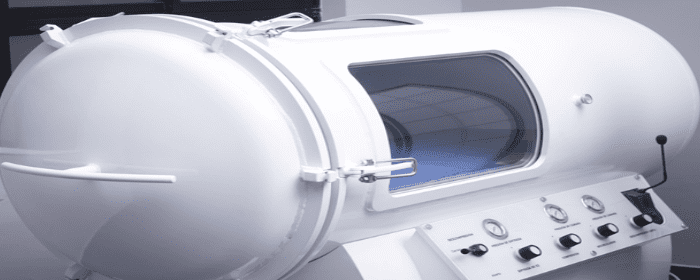
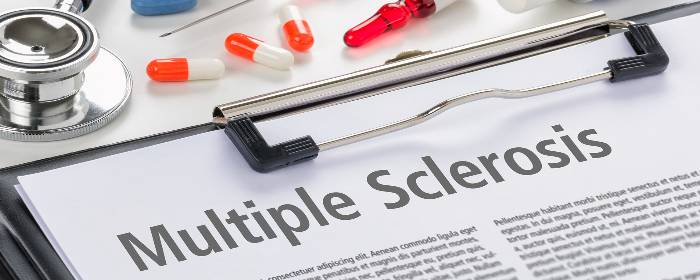
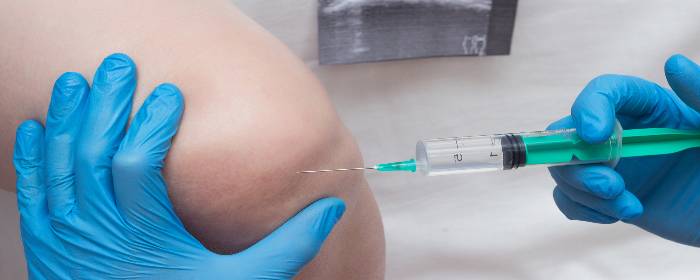
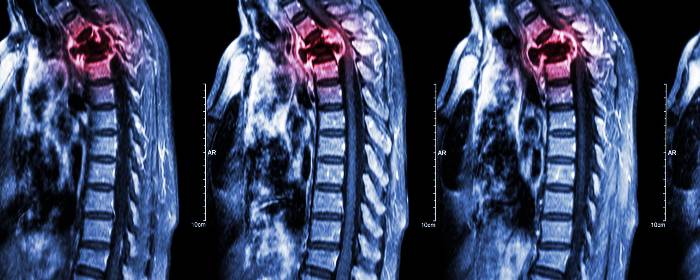
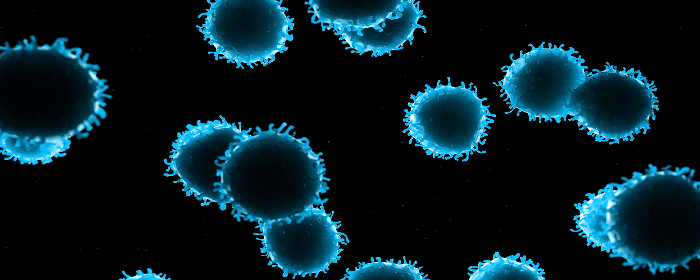
 St. Petersburg, Florida
St. Petersburg, Florida
